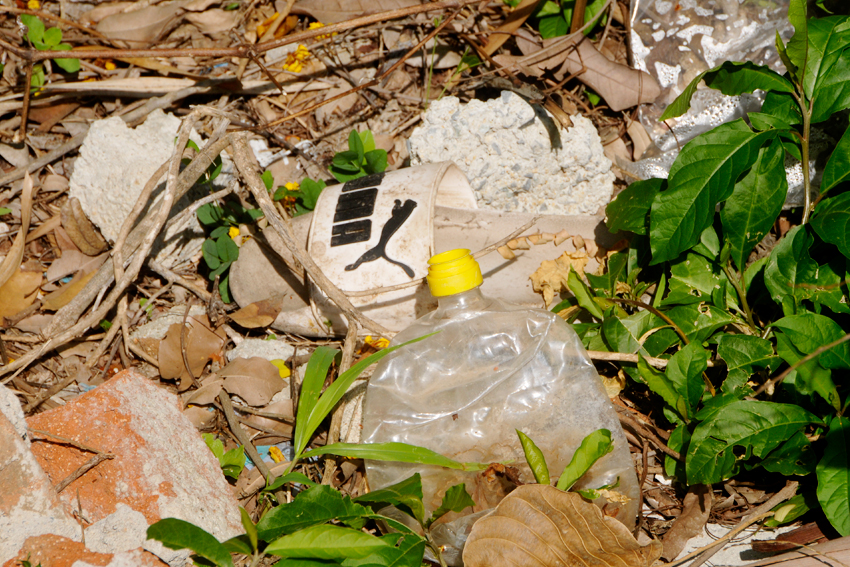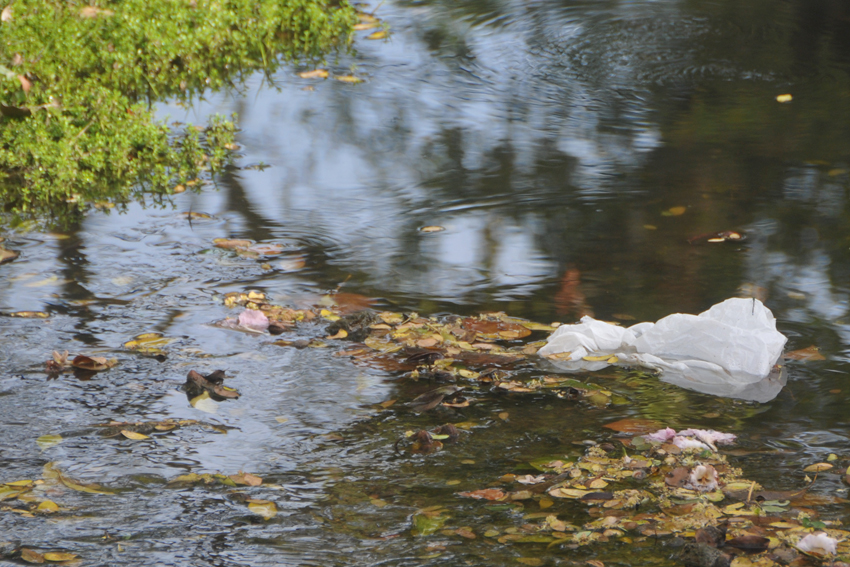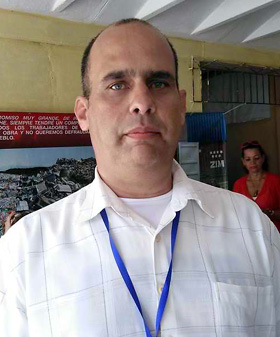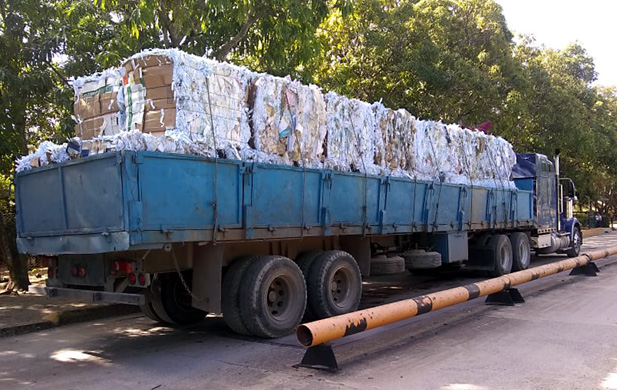 Photos: Reynaldo López, Dayana Menzoney, and Juan Manuel Olivares |
World Environment Day 2023 focuses on raising awareness of plastic pollution. Jorge Álvarez Álvarez, general director of the Environmental Regulation and Safety Office of the Ministry of Science, Technology and Environment (Citma), recently told the press that the country has a law already approved in the National Assembly, not yet published in the Official Gazette, which establishes the obligation to create a plan to reduce the use of disposable plastics and increase the efficiency of waste management and recycling processes.
In Las Tunas, in the opinion of the experts, this resource has begun to be put to greater use in recent years, associated with the proliferation of economic actors and local initiatives that promote its reuse, although they also point out that there is still a long way to go.
PLASTIQUEROS, THE RESOURCE BACK TO USEFULNESS
The plastiqueros did not want to talk to 26 or, to be fair, they decided that the press would not publish our dialogues and, with them, their names and the convoluted ways of the trade that feeds them.
Perhaps because they know that the plastic, the vital raw material from which they get toys, mops, buckets, and many other objects, (by the way, every day with better quality in detail) comes to them, mostly, through cart drivers and people who make alternative collections to the legal ways provided for recycling in the country.
Or perhaps because they know each other, and they left by phone warning that two journalists, with their questions, could lay bare the intricacies of hiring and the thousand and one tangles that surround their activity.
So we were left with the desire to hear stories in first person, see their photos, and show the laborious apparatus around their work. However, from the conversation with several of them, we learned a few things.
We learned that they only buy the plastic that floats in the water, "the rest is not good for these processes and can be more dangerous to health;" that is why you should not spend on them the about 15 pesos that each pound of the product costs. First, it is ground, then it has to be washed, dried, and, finally, melted.
They told us that, although it is a lot of work for one person, it is practically impossible for them to hire a stable workforce that can also legally declare them as their workers, because those who come to them try to earn a little money for a while, and then leave, usually not even completing the month.
We also found that they usually work on commissions and that, when covid-19 arrived, the panorama became harder for the business, to the point that, this year, it has been very difficult due to the scarce sales.
The plasticizers from other provinces do not produce the same as the ones from here, that is why, more than the competition, they strengthen alliances. In these lands they make decorative figures and toys, mainly painted; in Holguín, for example, they are not painted and are smaller, and in Camagüey, they have more production of mops, brooms, and other household utensils.
IS PLASTIC REALLY SO HARMFUL?
The intention to take plastic out of the environment and give it a use value (circular economy) is gaining space in Las Tunas. According to Cándido Alberto Medina Segura, head of the department of internal political instruments of CITMA in this territory, escorting the process is part of his functions.
Then he affirms that "most plastics give off toxins that are usually very harmful to human beings; some are associated with oncological, endocrine and similar conditions, harmful to all forms of life."
WE RECOMMEND
Harmful Plastic (+Photo Gallery)

He explains that microplastics affect the marine flora and we, part of the tropical chain, feed on fish that have eaten them in their usual diet; this element, something that seems so far away and improbable for some, causes respiratory diseases that can be serious, to say the least.
According to the expert, it is necessary to limit the use of single-use plastics (sachets, absorbents, wrapping boxes for fast food), and awareness in this regard can reduce hormonal ailments and prolong life.
"Sometimes to heat food in the microwave we use a plastic pan that is not the right one. And we don't know that all the chemicals contained in the container adhere to the food or water; this goes to the baby's milk bottle, for example, and becomes very harmful in the long term."
Medina Segura stated that Citma, as an institution, is capable of accompanying and explaining the importance of the sustainable use of this resource, and how mishandling it can cause great dilemmas. He added that there are entities such as the Empresa de Recuperación de Materias Primas (ERMP in Spanish), whose social responsibility includes taking care of and recycling, but citizens and social actors must become aware of the real damage to which we are exposed and of the urgency of achieving a culture of recycling among all of us.
COLLECTION OF PLASTICS IN LAS TUNAS, MUCH MORE IS MISSING
Recycling is the third key component of the well-known rule of the three "R's": reduce, reuse, and recycle. In Las Tunas, between eight and 10 tons of about eight different types of plastic are now recycled monthly.
This is explained to 26 by Keldhi Fonstecilla Matos, director of the Raw Materials Recovery Company, and he adds that this is the result of a new pricing strategy that greatly favors those who carry out the recycling activity, because before the amount was around, at most, a ton and a half.
 Keldhi Fonstecilla Matos, director of the Raw Materials Recovery Company |
"People think that it is just plastic that is collected and that's it, but the work is intense. We need technology, which we don't have, and hence the cooperative productions with the new economic players that give us a little oxygen in that sense; working that material requires mills, binders, injectors, extruders and, of course, everything is part of vital processing because everything that is made does not carry the same type of plastic."
Recycling collection points (still known as buying houses) remain active in all the municipalities of the province for the commercialization of raw materials by natural persons. And, through them, up to three million pesos are collected every month; a figure that is below the four million pesos defined in the production plan.
In the case of this city, they are located in Buena Vista, La Victoria (near Acopio); and at the Las Tunas de raw materials base (next to 13 de Marzo Workshops). They receive and classify, in addition to plastic, waste paper, cardboard, textiles, and cotton, as well as scrap steel, aluminum, bronze, copper, lead, and stainless steel.
The company’s deputy director, Nancy Ochoa Ascanio, explained this to 26. She told us that few self-employed workers are now linked to the company for their production.
"There is Yúnior Ricardo Hidalgo, who makes one-liter bottles that are very useful in retail stores, pharmacies, and opticians' stores. This is good evidence of what can be achieved along this path."
But there are not so many either, and Fonstecilla Matos is emphatic about this: "We work with the specific capacities we have; for example, one of the self-employed workers with whom we have contracts uses five tons of plastic a month, that is, 50 percent of what comes to us. That figure gives us the measure of why we do not open up to many more, although we do value options, remain aware, and try to grow in terms of offering a new use value to many products made from this material."
AWARENESS AND NEW ECONOMIC NICHES: THIS TIME HAND IN HAND

Most of the plastiqueros interviewed said they were unaware of the legal mechanisms for seeking advice in their work and confirmed that they have spent years perfecting their work empirically, both in the equipment they have and in the ways, they take to protect their health and overcome obstacles.
The fact that they are not legal persons should not be a real justification for not giving them due support in some way and, incidentally, it may be the way to open more and more the spectrum of a gear that contributes to the local economy, efficient recycling and substitutes raw materials that we do not have.
Especially if we take into account the fact that, for years, a large part of the population has been cleaning their houses, using junk, and giving their children toys made by the ingenuity of those hands that have made up for huge supply shortages in the Cuban market with their products.
Perhaps, if action is taken on the matter from several fronts, a real solution can be found to the complicated issue of the divers and lions; people who are no longer limited to collecting waste from a city space and have moved dangerously, in some cases, to the periphery of hospitals, state garbage dumps and other related sites. There, in places that do not always have the required control, so many things are found that, unfortunately, plastic could be the least of the problems.
The truth is that we are talking about a material that as waste represents a growing threat, but also a wasted opportunity because it is durable, lightweight, economical, and can be easily molded into an infinite number of products such as containers, pipes, industrial parts, packaging and fibers for the textile industry, just to mention a few.
The concept of circular economy was not born out of a whim, but out of necessity, as it promotes the optimization of resources, the reduction in the consumption of raw materials, and the use of waste. It is worth promoting its implementation in our geography.
Hopefully, World Environment Day will be a date that will help us to reflect and open a path in this direction.





